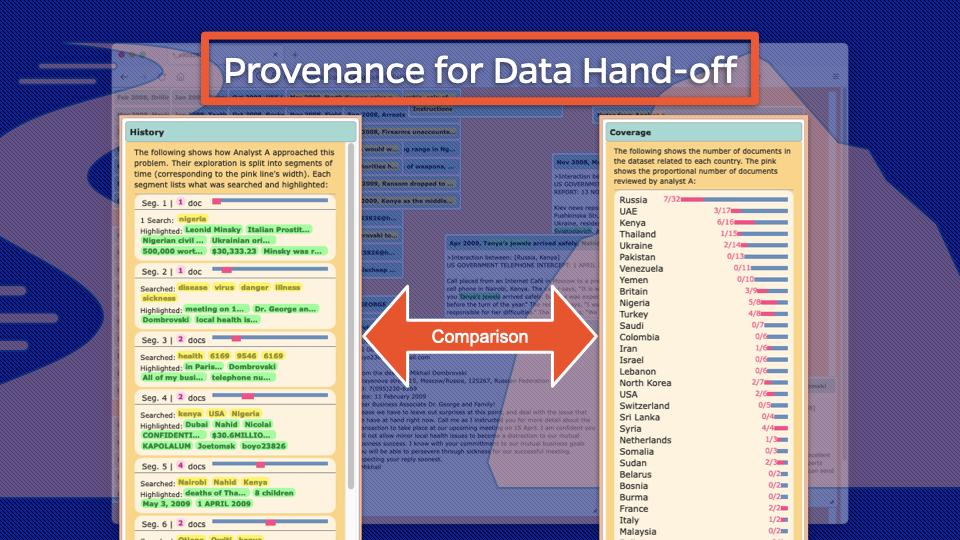The Influence of Visual Provenance Representations on Strategies in a Collaborative Hand-off Data Analysis Scenario
Jeremy E Block, Shaghayegh Esmaeili, Eric Ragan, John Goodall, Gregory David Richardson
View presentation:2022-10-20T20:45:00ZGMT-0600Change your timezone on the schedule page
2022-10-20T20:45:00Z

Prerecorded Talk
The live footage of the talk, including the Q&A, can be viewed on the session page, Provenance and Guidance.
Fast forward
Abstract
Conducting data analysis tasks rarely occur in isolation. Especially in intelligence analysis scenarios where different experts contribute knowledge to a shared understanding, members must communicate how insights develop to establish common ground among collaborators. The use of provenance to communicate analytic sensemaking carries promise by describing the interactions and summarizing the steps taken to reach insights. Yet, no universal guidelines exist for communicating provenance in different settings. Our work focuses on the presentation of provenance information and the resulting conclusions reached and strategies used by new analysts. In an open-ended, 30-minute, textual exploration scenario, we qualitatively compare how adding different types of provenance information (specifically data coverage and interaction history) affects analysts’ confidence in conclusions developed, propensity to repeat work, filtering of data, identification of relevant information, and typical investigation strategies. We see that data coverage (i.e. what was interacted with) provides provenance information without limiting individual investigation freedom. On the other hand, while interaction history (i.e. when something was interacted with) does not significantly encourage more mimicry, it does take more time to comfortably understand, as represented by less confident conclusions and less relevant information gathering behaviors. Our results contribute empirical data towards understanding how provenance summarizations can influence analysis behaviors.